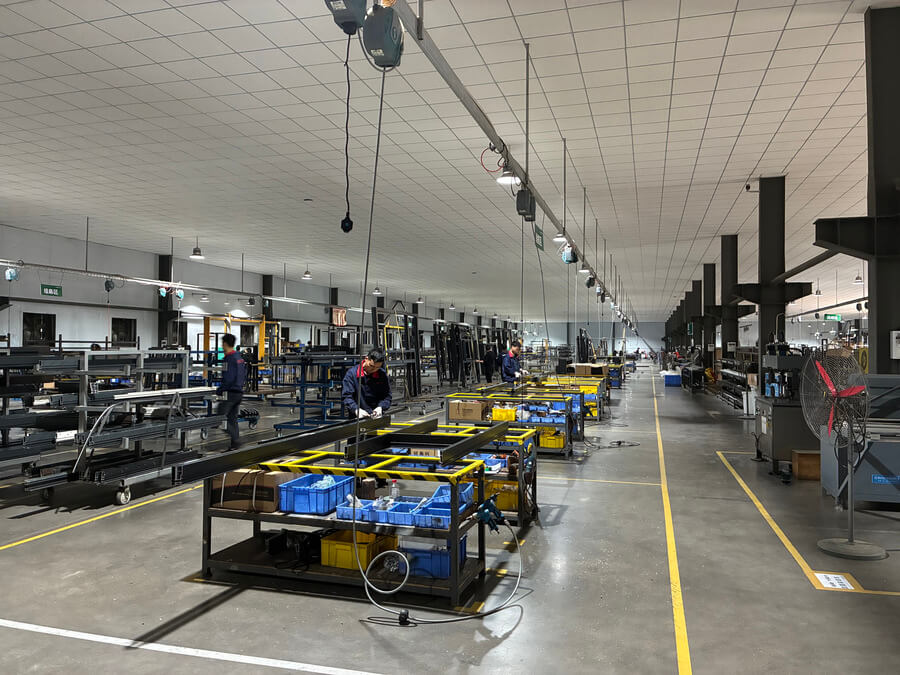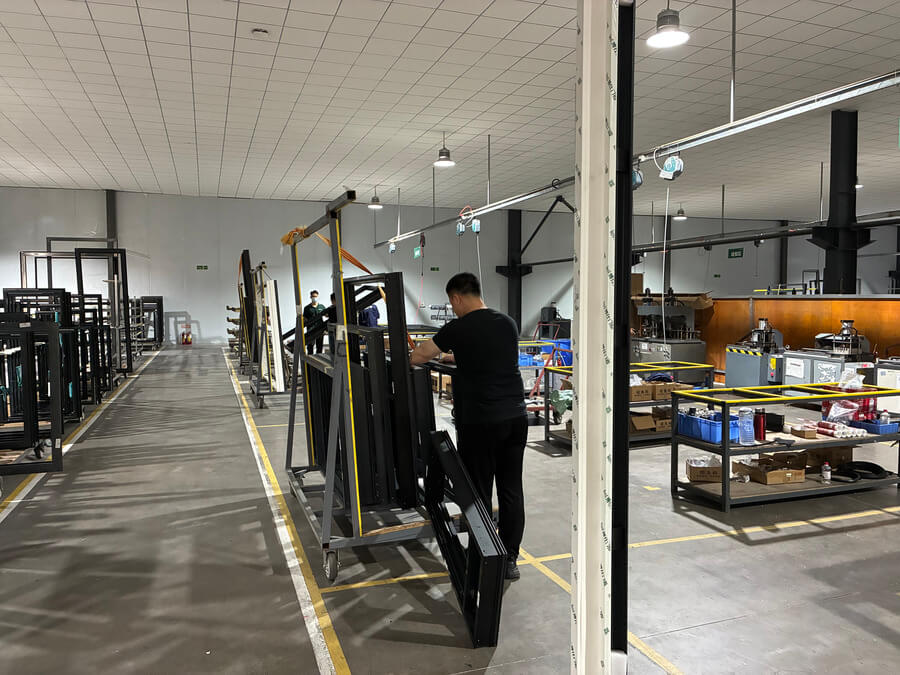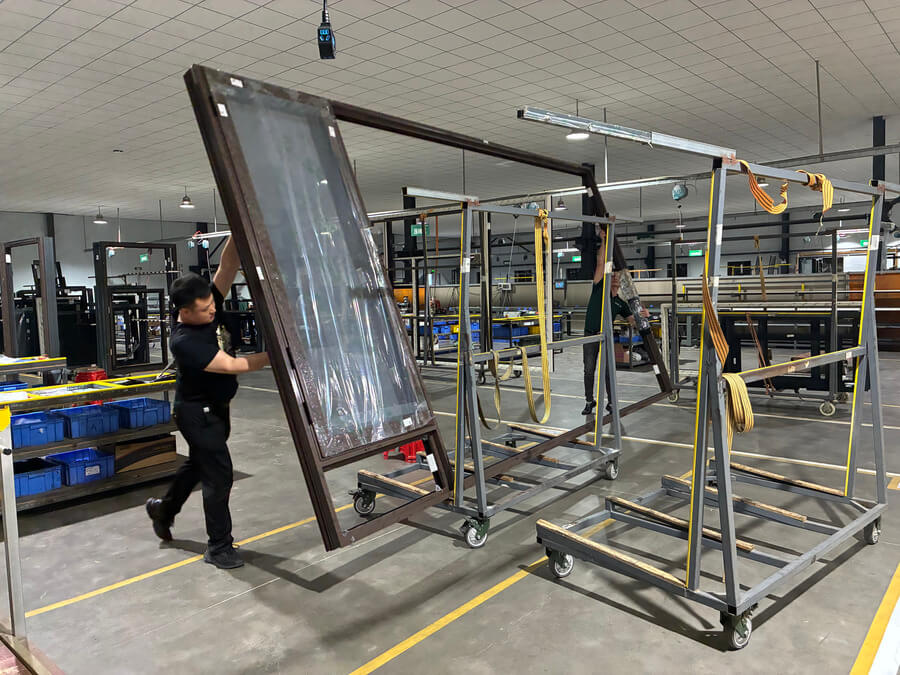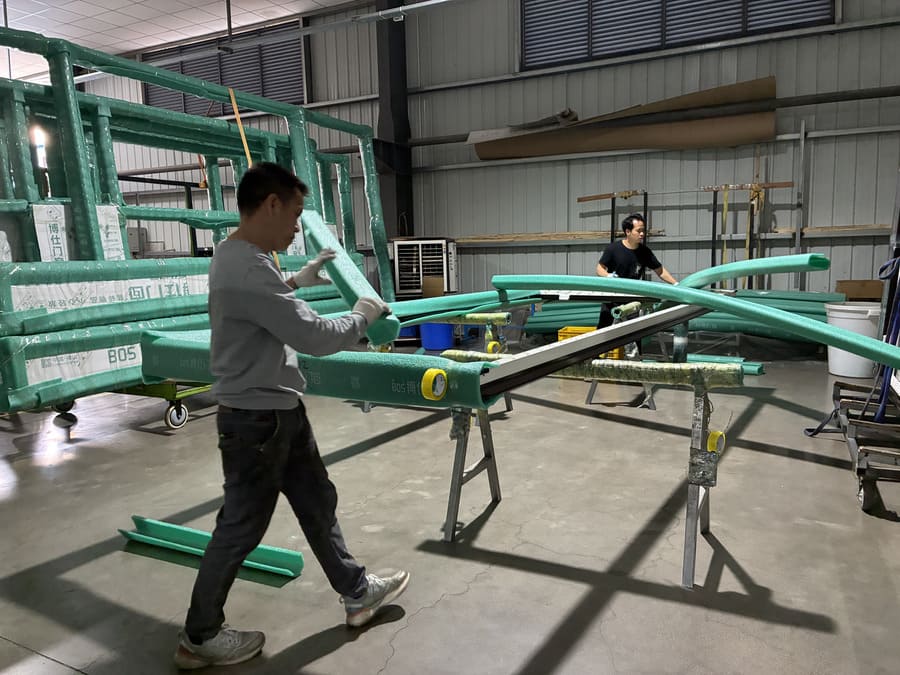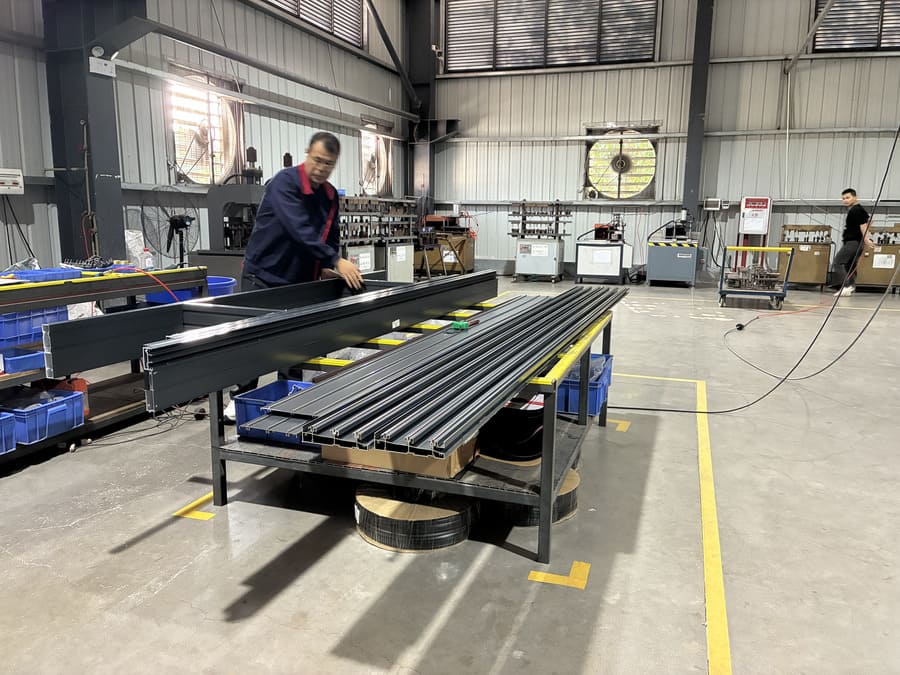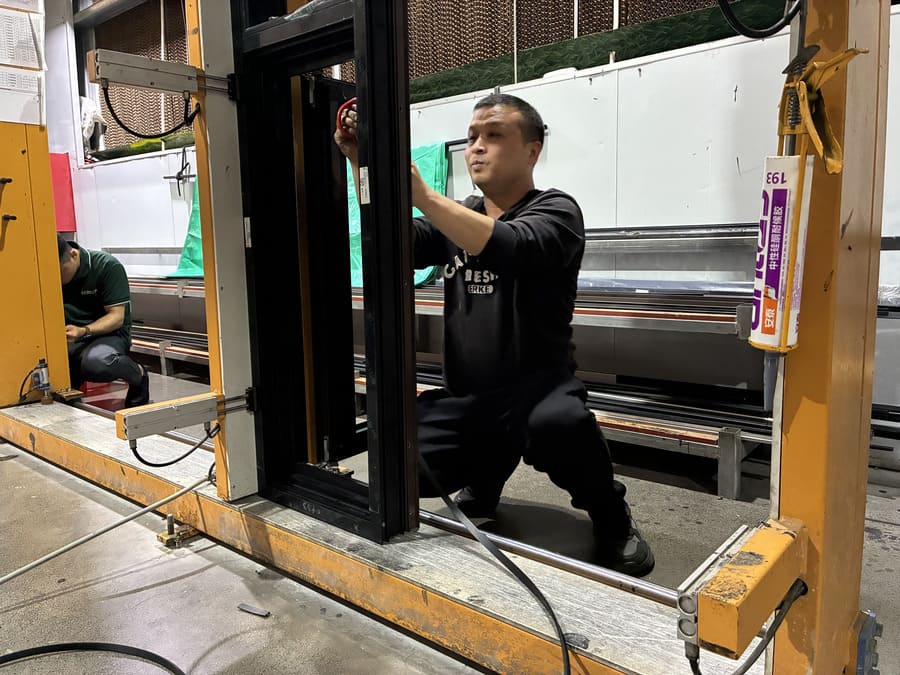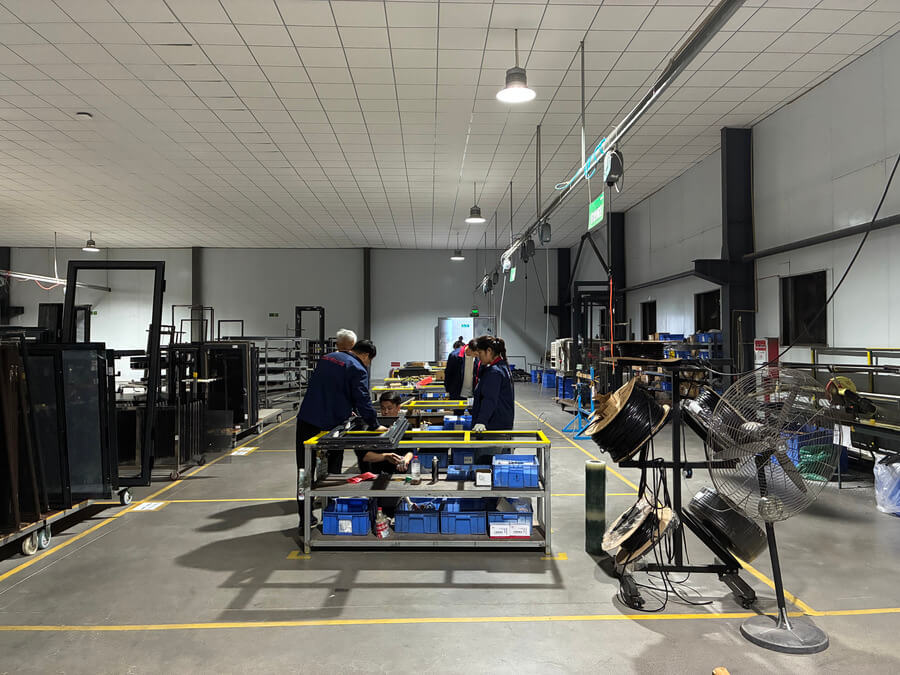Main Parts of a Door

Below are the key structural elements of a standard door:
Door Leaf (or Door Panel)
The door leaf, or simply the “active door,” is the primary moving part that opens and closes. The door leaf is also the most prominent and crucial part of any door assembly. Door panels can be made of different materials, including solid wood, engineered wood, steel, fiberglass, or glass.
The type of material and the panel you choose determine not just the aesthetics, but also the weight, durability, insulation, and security of the door. In double doors, one is active (opens/closes) and the other may be inactive. The doors can be glass inserts or divided lites to feature the design and allow natural light into the space.
Door panels can also come in different styles:
- Flush doors have a plain, flat, uninterrupted surface and a very basic profile.
- Paneled doors are used for adding a level of texturing, even character and dimension to door construction with raised or recessed panels.
- Glazed doors have glass inserts or divided lites that allow light to pass through. It is a stylish option with patio or French doors.
Door Frame
The door frame is the stationary part of the door that surrounds and supports the door panel. It is generally made of wood, metal, or composite materials. The door frame is securely anchored to the wall opening to provide structural support.

The door frame is made of the following components:
- Head door jamb (top horizontal section piece)
- Side door jambs (vertical section pieces that are located on each side)
- Sill or threshold (bottom horizontal piece, or more in the case of exterior doors or storm doors).
A properly installed door frame makes sure that the door can align, swing, and latch properly. The door frame is also there as a barrier to the doorway to create a seal for insulation, resist impact, support the door hinges, and their hardware.
Hinges

Hinges are a type of mechanical bearing. The hinge is what attaches the door panel to the frame and allows the panel to swing open and close. Hinges are usually made from metal, and there are many different types of hinges to match the weight and function of the door.
Hinge stiles are a critical component of every residential door and typically are comprised of butt hinges, which require that the mortise plate be cut into both the door edge and frame for proper installation.
In some cases, a ball-bearing hinge or continuous hinges might be used if the door is heavy or frequently used, since they are less prone to wear and damage. Also, in some cases, concealed hinges can be used to reduce the overall look of a barrel hinge, or continuous (i.e., piano) hinges can be installed for heavy-duty applications.
Hinges also need to be installed and aligned properly. If they are not, the door can sag, rub against the floor, or not close properly.
Door Stop
A door stop is a covering piece, made of wood or metal, that is attached to the inside of the frame along the door head and side jambs of the door. The purpose of the stop is to limit the swing of the door, ensure that it stops properly when closed, and form a seal between the door and the frame for better insulation and soundproofing purposes.
Threshold (or Sill)

The threshold, also called the sill, is located on the bottom of any exterior doorframe. The threshold provides a solid base for the door to close against and provides a barrier to wind, rain, dust, and insects. The threshold also typically has a built-in slope or sealing element to assist water flow away from any door entry.
Thresholds are available in wood, aluminum, and composite materials, and they often have rubber and/or vinyl inserts to help with sealing capabilities. With interior doors, thresholds are usually unnecessary unless required for transition between flooring or to satisfy accessibility concerns.
Key Door Hardware Elements

Below are the key door hardware elements found in most installations:
Lockset
The lock stile consists of the lock mechanism and it is simply the door latch, lock, and knob or handle combined. It’s one of the most critical elements of the door for security and operation. There are many types and configurations of lock mechanisms, including:
- Passage sets- no lock, used for interior doors such as closets or hallways.
- Privacy sets- basic lock, good for bathrooms and/or bedrooms.
- Entry locksets- keyed lock, exterior doors
Deadbolt
A deadbolt adds security to a house exterior door. While latch bolts and latches can be retracted with a simple turn of a handle, a deadbolt can only be retracted by operating it with a key or thumb turn.
There are a variety of deadlocks, including single key cylinder deadbolts (keyed exterior, thumb turn interior), double cylinder (keyed on both sides), and electronic deadbolts for smart access control.
Strike Plate
The strike plate is the metal plate mounted to the door frame, which the latch retract or deadbolt fits into when the door is closed. In addition to helping secure the actual door lock, strike plates offer reinforcement to the door frame. High security doors often use reinforced or oversized strike plates that would resist any forced entry.
Door Handle or Knob

A door handle, or knob, is the hardware feature you operate to swing open and close the door. Door hardware can range from round knobs to slim lever handles.
Lever handles are the easiest to operate, and generally more accessible when considering those with limited hand ability. Often, front door handlesets are decorative and integrate with their locking systems.
Door Closer
A door closer is a mechanical device that automatically ensures the door shuts once opened. It is commonly used on commercial or fire-rated doors to ensure doors stay closed.
Door closers can either be surface-mounted on the top rail, on a bottom rail, or concealed within the door, depending on the door type and intended use.
Peephole or Door Viewer
Located on the entrance doors, a peephole is a feature that provides occupants the ability to see outside the door without actually opening the door. This will consist of a small optical device mounted at eye-level. In today’s homes, this feature can be replaced or enhanced with a smart video door viewer.
Doorbell or Intercom (Optional)
Doorbells and intercoms are often installed near entrance doors and are often considered part of the entrance hardware, although they are not attached to the door. Video doorbells, in particular, provide additional convenience and security, especially in a smart home.
Decorative and Functional Trims


Besides the bare door and its hardware, trims are commonly found as both decorative and functional. These trims allow gaps to be concealed, provide weather performance, and complete the aesthetic of the door.
Below are the most frequently used decorative elements:
Casing (or Architrave)
This is the decorative trim that is found around the outer edges of the door on the wall. It covers the gap between the wall and the door frame, and gives a clean and finished appearance.
Casings range from flat and simple to detailed and ornate, depending on the architecture surrounding the space. Casings can be found on both interior and exterior doors, and are an important element in the use of interior design.
Mouldings
Mouldings are decorative door lite that can be added for aesthetic purposes only. Crown moulding can be used at the top of the door, or additional trim can cover the entire perimeter of the door, which adds to a more formal and traditional effect.
Stop moulding almost always matches the baseboards and the window or door frame, assisting in the totality of the design.


Weather Stripping
Weather stripping is a functional trim used around doors that are on the outside of the house to cover gaps and block the movement of air, moisture, dirt, and insects into the house. Winter weather stripping helps energy efficiency by engaging with airflow for the purpose of reducing heat loss and drafts.
Weather stripping is usually made out of rubber, foam, felt, or vinyl and is installed around the door side jambs and door head of the frame.
Door Sweep
A door sweep is located at the bottom of a door (either inside or outside) to close the gap between the door and the floor. It stops cold air, wind, and moisture from coming in under the door, as well as intrusion opportunities for pests.
Sweeps are especially important to exterior doors, and can be made out of rubber, silicone, or bristle material.
Conclusion

End users, contractors, and even designers typically pay more attention to the material, appearance, and dimensions of a door than to the fundamental structure of a door. However, by knowing the components of a door and how they work, readers can make better decisions that are tailored to their needs and take their home improvement projects to the next level while saving money.
Understanding the components and operation of your door can help you stay informed, avoid installation and long-term maintenance problems, and get more value for your money. We at Boswindors are proud to provide doors that put quality and safety first. Reach out to us to get started!







